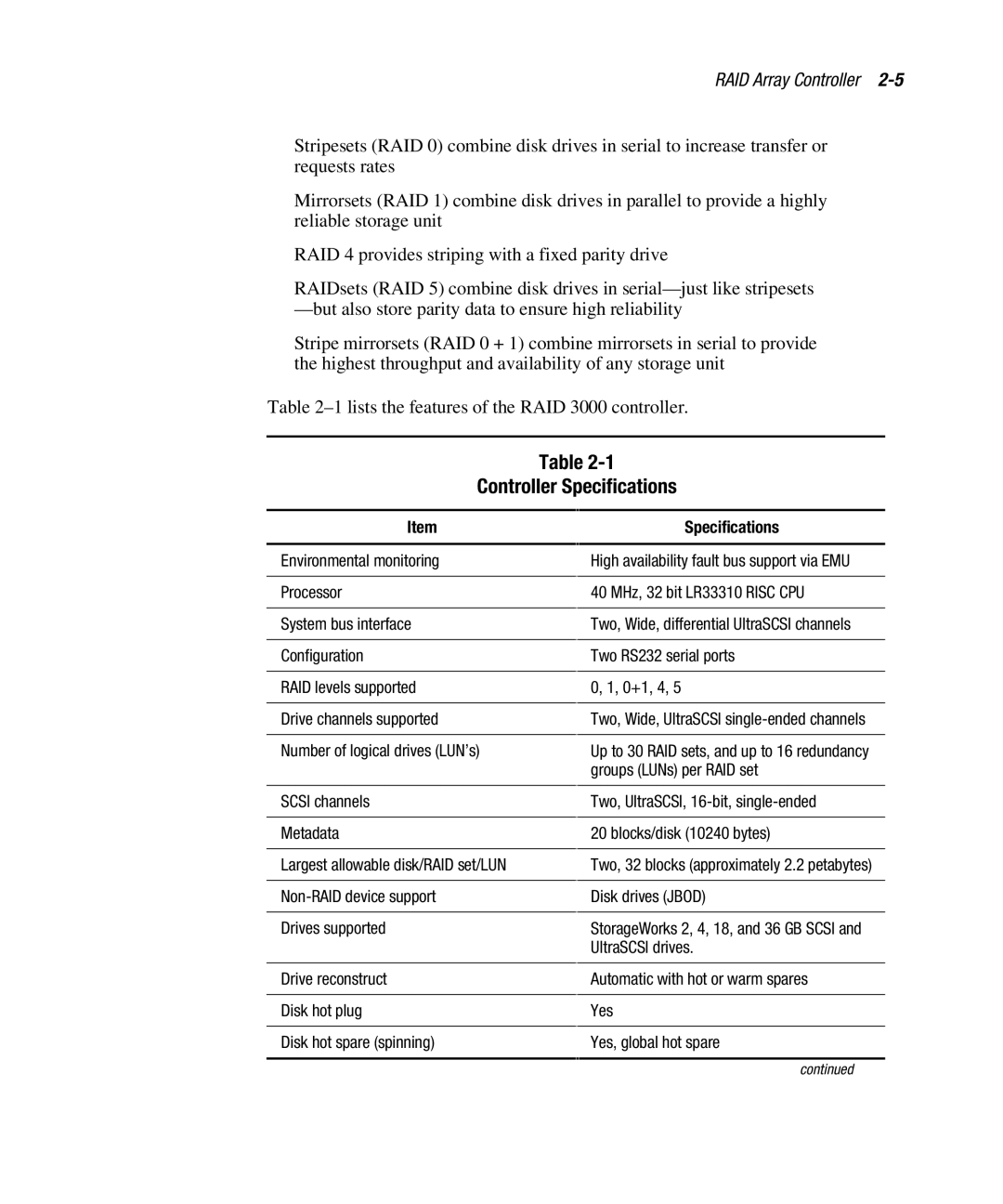
RAID Array Controller
■Stripesets (RAID 0) combine disk drives in serial to increase transfer or requests rates
■Mirrorsets (RAID 1) combine disk drives in parallel to provide a highly reliable storage unit
■RAID 4 provides striping with a fixed parity drive
■RAIDsets (RAID 5) combine disk drives in serial— just like stripesets
— but also store parity data to ensure high reliability
■Stripe mirrorsets (RAID 0 + 1) combine mirrorsets in serial to provide the highest throughput and availability of any storage unit
Table
Table
Controller Specifications
Item
Environmental monitoring
Processor
System bus interface
Configuration
RAID levels supported
Drive channels supported
Number of logical drives (LUN’s)
SCSI channels
Metadata
Largest allowable disk/RAID set/LUN
Drives supported
Drive reconstruct
Disk hot plug
Disk hot spare (spinning)
Specifications
High availability fault bus support via EMU
40 MHz, 32 bit LR33310 RISC CPU
Two, Wide, differential UltraSCSI channels
Two RS232 serial ports
0, 1, 0+1, 4, 5
Two, Wide, UltraSCSI
Up to 30 RAID sets, and up to 16 redundancy groups (LUNs) per RAID set
Two, UltraSCSI,
20 blocks/disk (10240 bytes)
Two, 32 blocks (approximately 2.2 petabytes)
Disk drives (JBOD)
StorageWorks 2, 4, 18, and 36 GB SCSI and UltraSCSI drives.
Automatic with hot or warm spares
Yes
Yes, global hot spare
continued
